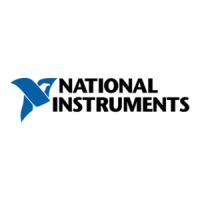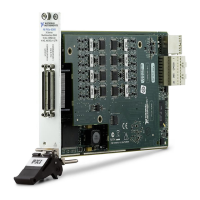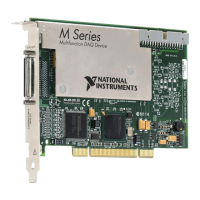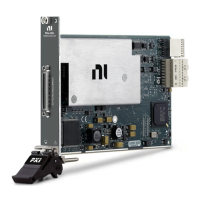Do you have a question about the National Instruments NI 6259 and is the answer not in the manual?
| Category | Data Acquisition Device |
|---|---|
| Analog Input Resolution | 16 bits |
| Maximum Sampling Rate | 1.25 MS/s |
| Analog Output Channels | 4 |
| Analog Output Resolution | 16 bits |
| Analog Output Range | ±10 V |
| Counter/Timers | 2 |
| Bus | PCI |
| Analog Input Channels | 32 single-ended / 16 differential |
| Input Range | +/- 10 V |
| Operating Temperature Range | 0 °C to 45 °C |
General safety guidelines for operating M Series devices and modules.
Steps for installing M Series I/O devices, including software and hardware.
Overview of DAQ hardware components and their functions in M Series devices.
Description of signals found on M Series I/O connectors.
Overview of the main blocks in M Series analog input circuitry.
Explanation of input ranges and their effect on M Series device resolution.
Description of differential, referenced single-ended, and non-referenced single-ended modes.
Explanation of software-timed and hardware-timed acquisition methods.
Details on analog input triggering actions: start, reference, and pause triggers.
Recommended input configurations for floating and ground-referenced signal sources.
How to set the AO range and change analog output ranges.
How to acquire digital waveforms on Port 0 DIO lines.
How to generate digital waveforms on the Port 0 DIO lines.
Various counter input applications including edge counting and frequency measurement.
Applications for counter outputs like pulse generation and frequency generation.
Information on counter triggering actions: Arm Start Trigger, Start Trigger, and Pause Trigger.
Overview of clock routing circuitry for M Series devices.
How to generate a trigger on a digital signal using PFI, RTSI, or PXI_STAR.
How to generate a trigger on an analog signal using APFI terminals or AI channels.
Detailed timing information for analog input triggers and clock signals.
Common analog input issues like crosstalk, ghost voltages, and random drift.









